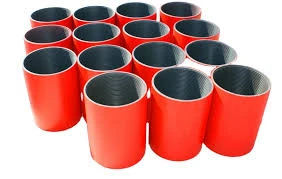- Afrikaans
- Albanian
- Amharic
- Arabic
- Armenian
- Azerbaijani
- Basque
- Belarusian
- Bengali
- Bosnian
- Bulgarian
- Catalan
- Cebuano
- Corsican
- Croatian
- Czech
- Danish
- Dutch
- English
- Esperanto
- Estonian
- Finnish
- French
- Frisian
- Galician
- Georgian
- German
- Greek
- Gujarati
- Haitian Creole
- hausa
- hawaiian
- Hebrew
- Hindi
- Miao
- Hungarian
- Icelandic
- igbo
- Indonesian
- irish
- Italian
- Japanese
- Javanese
- Kannada
- kazakh
- Khmer
- Rwandese
- Korean
- Kurdish
- Kyrgyz
- Lao
- Latin
- Latvian
- Lithuanian
- Luxembourgish
- Macedonian
- Malgashi
- Malay
- Malayalam
- Maltese
- Maori
- Marathi
- Mongolian
- Myanmar
- Nepali
- Norwegian
- Norwegian
- Occitan
- Pashto
- Persian
- Polish
- Portuguese
- Punjabi
- Romanian
- Russian
- Samoan
- Scottish Gaelic
- Serbian
- Sesotho
- Shona
- Sindhi
- Sinhala
- Slovak
- Slovenian
- Somali
- Spanish
- Sundanese
- Swahili
- Swedish
- Tagalog
- Tajik
- Tamil
- Tatar
- Telugu
- Thai
- Turkish
- Turkmen
- Ukrainian
- Urdu
- Uighur
- Uzbek
- Vietnamese
- Welsh
- Bantu
- Yiddish
- Yoruba
- Zulu
Exploring the Anatomy and Function of the API PUP Joint in Detail
Understanding the API Pup Joint A Comprehensive Overview
The term API pup joint refers to a specific type of joint commonly used in the oil and gas industry, particularly in drilling operations. In any drilling activity, the integrity of the equipment and the efficiency of the operation are of utmost importance. The API (American Petroleum Institute) specifications set certain standards for these components to ensure safety, durability, and performance in the often harsh environments in which they operate.
What is an API Pup Joint?
A pup joint is a short length of pipe used in drilling operations to allow for minor adjustments in the overall length of the drill string or pipelines. These short pipe sections are typically utilized when the length of a standard pipe (which can be several feet long) is not required. The essence of a pup joint is its versatility—it provides the necessary flexibility to accommodate various operational needs without the necessity to remove and replace longer sections of pipe.
The API pup joint adheres to specific size and material standards established by the American Petroleum Institute. These standards ensure that all components are compatible, reliable, and capable of withstanding the demanding conditions found in drilling environments, such as extreme pressures and corrosive substances.
Applications of API Pup Joints
API pup joints are employed in various applications within the oil and gas industry. Some common uses include
1. Drilling Operations During drilling, operators may need to adjust the depth or length of the drill string. By adding or removing pup joints, they can make these adjustments more efficiently without needing to overhaul the entire setup.
2. Wellhead Configurations The setup around a wellhead often involves numerous connected pipes. Pup joints provide the flexibility needed to achieve the desired configuration or alignment.
api pup joint

3. Production Pipelines In production, the overall design of pipelines may require precise lengths, and pup joints help achieve this without compromising flow or integrity.
4. Fluid Transfer When transferring fluids, especially in areas where piping runs at odd angles, pup joints ensure smooth connections and transitions by allowing for minor alterations in the system’s layout.
Technical Specifications
API pup joints come in various specifications, including different lengths, diameters, and pressure ratings. The most common sizes are typically between 1 to 20 feet long, depending on the application's requirements. They are manufactured using high-strength materials such as carbon steel or alloy steel, enabling them to perform well under high stress and preventing issues like corrosion.
The threaded ends of the pipes are typically designed to meet API standards, ensuring compatibility with the drilling equipment. Standard weight designations, such as the API 5L specification for line pipe, are also significant benchmarks. Understanding these specifications is critical for operators to guarantee that the pup joints will function correctly within the intended system.
Importance of Quality and Compliance
When selecting API pup joints, it is essential to prioritize quality and compliance with industry standards. Poorly manufactured joints can lead to severe failures, including leaks or breakage, which may result in costly downtime and even pose safety risks to personnel on site. Therefore, reputable suppliers and manufacturers are crucial for ensuring that these components meet the rigorous standards set forth by the API.
Conclusion
In conclusion, API pup joints play a vital role in the efficiency and safety of drilling operations in the oil and gas industry. Their ability to allow for precise adjustments, while adhering to strict API standards, makes them indispensable tools for operators. As the industry continues to evolve and face new challenges, such as increased depth and complexity in drilling operations, the importance of reliable components like pup joints will only continue to grow. Understanding their functionality and specifications is paramount for professionals in the field, ensuring ongoing safety and operational success.
-
Well Casing Extension Couplings – Applications and InstallationNewsJun.06,2025
-
Types of Crossover Subs in Drilling & CompletionNewsJun.06,2025
-
Key Features of High-Quality Tubing Pup JointsNewsJun.06,2025
-
Installation and Maintenance Tips for Steel Couplings for PipeNewsJun.06,2025
-
How to Select the Right Pup Joint for Oil & Gas OperationsNewsJun.06,2025
-
Applications of Stainless Steel Pipe CouplingsNewsJun.06,2025







